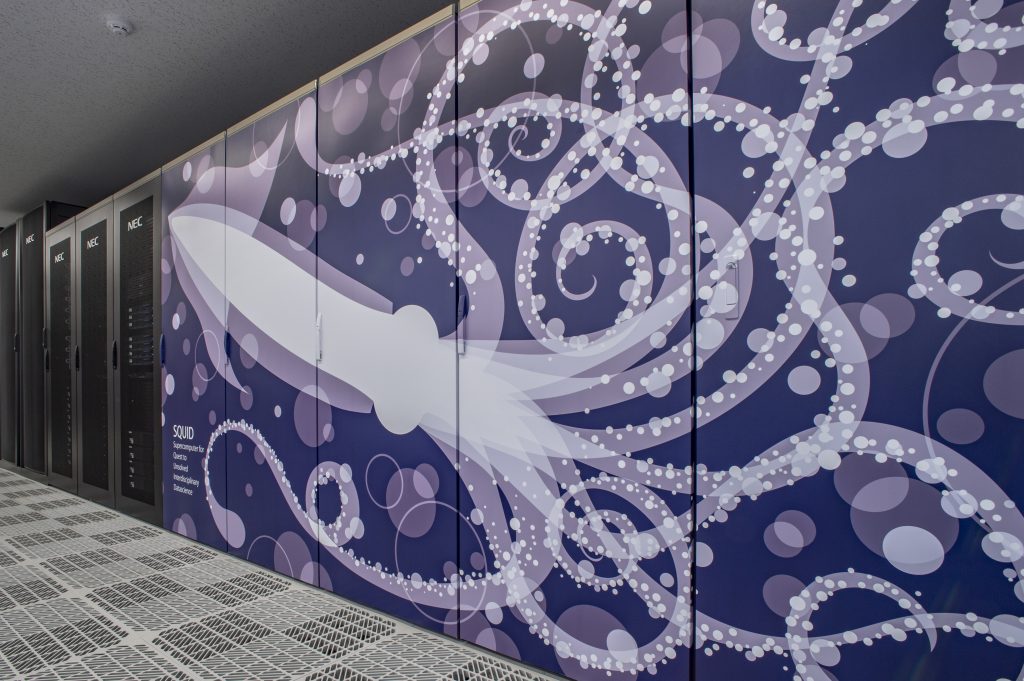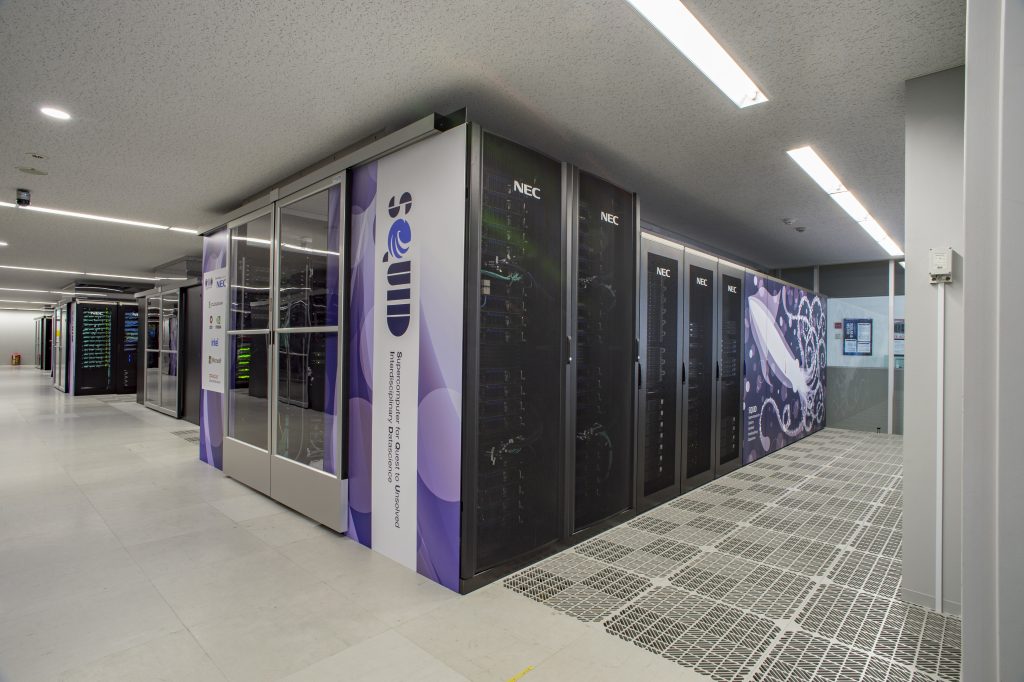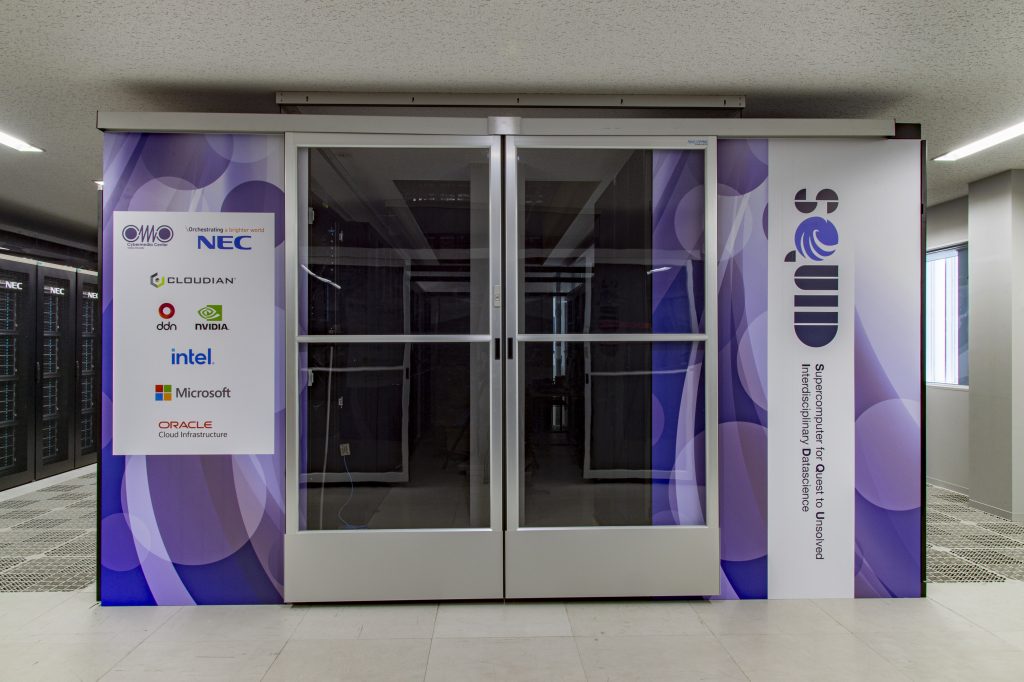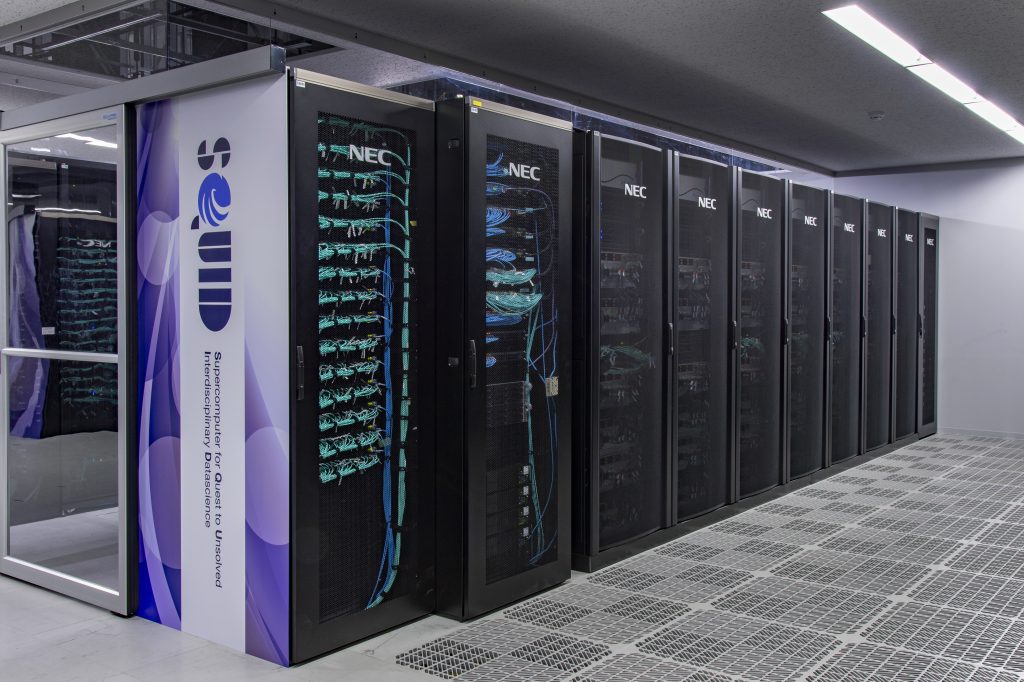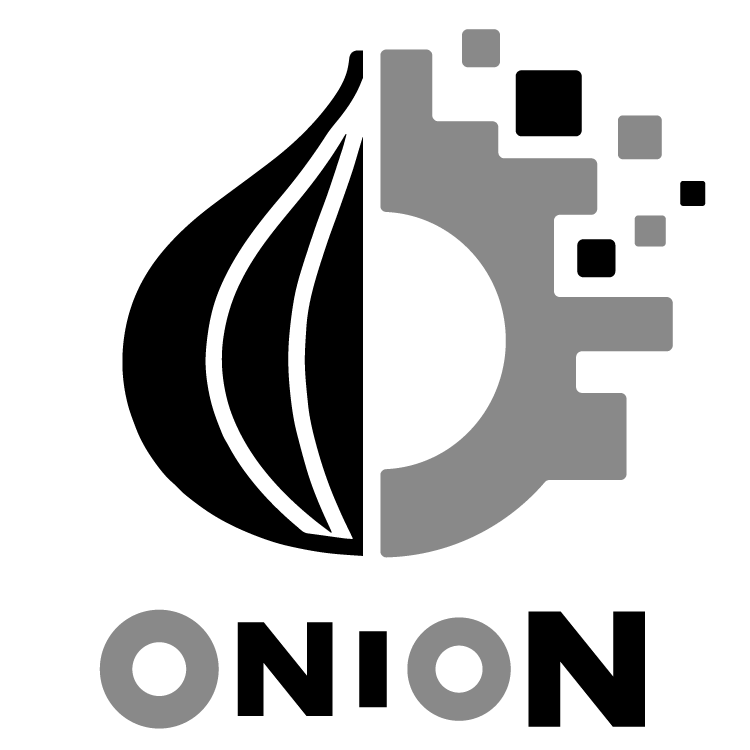更新日時:2024年04月23日 / mdxⅡ
The “mdxⅡ“ is a system with a total theoretical computational performance of 430.08 TFLOPS, consisting of regular compute nodes (Red Hat OpenStack Platform), interoperable nodes (VMware vSphere), and storage groups. It is operated by the institutions that make up the Data Utilization Society Creation Platform collaborative project. Each resource within the system is provided by a virtual machine. Please see this page for a detail.
System Configuration
| Total Computing Performance | 1,412.18 TFLOPS | ||
|---|---|---|---|
| Node Configuration | Standard Compute Node Group 54 nodes (387.072 TFLOPS) |
・CPU: Intel Xeon Platinum 8480+ Processor (2.0 GHz, 56 cores) ×2 ・Theoretical Performance (per node): 7.168 TFLOPS ・Main Memory: 512 GB |
|
| Interoperable Node Group 6 nodes (43.008 TFLOPS) |
・CPU: Intel Xeon Platinum 8480+ Processor (2.0 GHz, 56 cores) ×2 ・Theoretical Performance (per node): 7.168 TFLOPS ・Main Memory: 512 GB |
||
| GPU Node Group 7 nodes (982.1 TFLOPS) |
・CPU: Intel Xeon Gold 6530 Processor (2.1 GHz, 32 cores) ×2 ・GPU: NVIDIA H200 ×4 ・Theoretical Performance (per node): 140.300 TFLOPS ・Main Memory: 1,024 GB |
||
| Storage Group | Lustre File Storage |
DDN ExaScaler ・Usable Capacity: NVMe 1,106.48 TB |
|
| Object Storage |
Cloudian HyperStore ・Usable Capacity: 432 TB |
||
| Interconnect | 200GbE Ethernet | ||
Virtual Machines (CPU Pack)
Example: Applying for a 100 CPU pack allows you to use CPU: 100 virtual cores / Memory: 200 GB.
*1 virtual core is equivalent to 0.5 physical core.
| CPU Pack | |
| CPU Core Count | 1 virtual core |
| Memory | 2 GB |
| Theoretical Performance (per CPU pack) | Approx. 32 GFLOPS |
| Maximum Assignable CPU Packs per VM | 224 CPU packs (224 virtual cores) |
Virtual Machines (GPU Pack)
Example: Applying for 2 GPU packs allows you to use 2 GPUs / CPU: 60 virtual cores / Memory: 492 GB.
*1 virtual core is equivalent to 0.5 physical core.
| GPU Pack | |
| Number of GPUs | 1 GPU |
| CPU Core Count | 30 virtual cores |
| Memory | 246 GB |
| Theoretical Performance (per GPU pack) | Approx. 35 TFLOPS |
| Maximum Assignable GPU Packs per VM | 4 GPU packs (120 virtual cores) |
更新日時:2020年11月25日 / SQUID
SQUID(Supercomputer for Quest to Unsolved Interdisciplinary Datascience), aka, (Supercomputer system for HPC and HPDA)
starts operation on May 1, 2021. This system is composed of different types of 3 clusters, General purpose CPU nodes, GPU nodes, Vector nodes. Total Peak performance is 16.591 PFLOPS.
System Configuration
| Total computing performance | 16.591 PFLOPS | ||
|---|---|---|---|
| Node Configuration | General purpose CPU nodes 1,520 nodes (8.871 PFLOPS) |
CPU:Intel Xeon Platinum 8368 (Icelake / 2.4 GHz 38 cores) 2 CPUs Memory:256GB |
|
| GPU nodes 42 nodes (6.797 PFLOPS) |
CPU: Intel Xeon Platinum 8368 (Icelake / 2.4 GHz 38 cores) 2 CPUs Memory: 512GB GPU:NVIDIA A100 8 units |
Vector nodes 36 nodes (0.922 PFLOPS) |
Vector Host | AMD EPYC 7402P (2.8 GHz 24 cores) 1 CPU Memory: 128GB |
| Vector Engine |
NEC SX-Aurora TSUBASA Type20A(10 cores) 8 units Memory: 48GB |
||
| Storage | DDN EXAScaler (Lustre) | HDD:20.0 PB NVMe:1.2 PB |
|
| Interconnect | Mellanox InfiniBand HDR (200 Gbps) | ||
*The calculation precision used to derive the theoretical computing performance is "double precision."
How to use
Gallery
News
-
Please think about referring the following paper on SQUID when you publish a research result obtained using SQUID.
Supercomputer for Quest to Unsolved Interdisciplinary Datascience (SQUID) and its Five Challenges -
SQUID article was published on Intel WEB site.
Osaka University CMC Enables Large-Scale Research
SQUID opens new doors to national and global scientific collaboration with a heterogeneous architecture - In September 2022, a collaboration research using SQUID was introduced in the feature article of Nikkel Leaders Vision.
- A feature article on SQUID [DOI:10.18910/87667] was published in Cyber HPC Journal No. 11.
- The paper of AXIES2021 "ONION: Osaka University’s Data Aggregation Infrastructure" is now online.
- SQUID-CPU was ranked in 67th, 54th, and 57th in TOP500, HPCG and Green500 respectively in June 2021.
- We unveiled SQUID on May 19, 2021. Please see this page for a detail.
- SQUID service starts at 6 May. and we issued press release for SQUID.
- On Apr. 6 Intel has announced the third generation Intel Xeon Scalable processor (Ice Lake).
Two Intel Xeon Platinum 8368 (38C, 2.40GHz) are on each of general-purpose CPU nodes and GPU-nodes in SQUID. The detail information on the processor is available from the following web sites. (Osaka University is also mentioned in the articles.)
Intel's event(How Wonderful Gets Done 2021)
Supermicro's press release
HPCWire
- In the case that you plan to port your code running on the SX-ACE system to the one for SX-Aurora TSUBASA, you are advised to modifying a source code and collecting data related to your program running on SX-ACE in advance. The information is available from the the document below.
SX-Aurora TSUBASA移行にあたっての注意点 - Mr. Hashizume, Data Direct Networks Japan,introduced SQUID on PC Cluster Symposium 20th on 14 December 2020.
- Please see our press release issued on Nov 25 for a detail of SQUID.
更新日時:2016年10月15日 / ONION
ONION(Osaka university Next-generation Infrastructure for Open research and open InnovatioN) is a data aggregation platform that is linked to SQUID. ONION consists of "EXAScaler" for a file system of SQUID,"ONION-file" for WEB storage service, and "ONION-object" for an object storage.
ONION makes it easy for you to transfer data between your PC and the supercomputer. In addition, ONION can be used in a variety of ways, such as immediately sharing calculation results with overseas or corporate collaborators who do not have a SQUID or OCTOPUS account, or manipulating data from a smartphone. Of course, it can also be used to store and share research data in the laboratory.
The following paper describes the background, system configuration, and details of the functions.
ONION Osaka University's Data Aggregation Infrastructure
Application for use
If you use ONION-object, you have to apply separately from SQUID. Plaease see this page for application, consult, or detail of service.
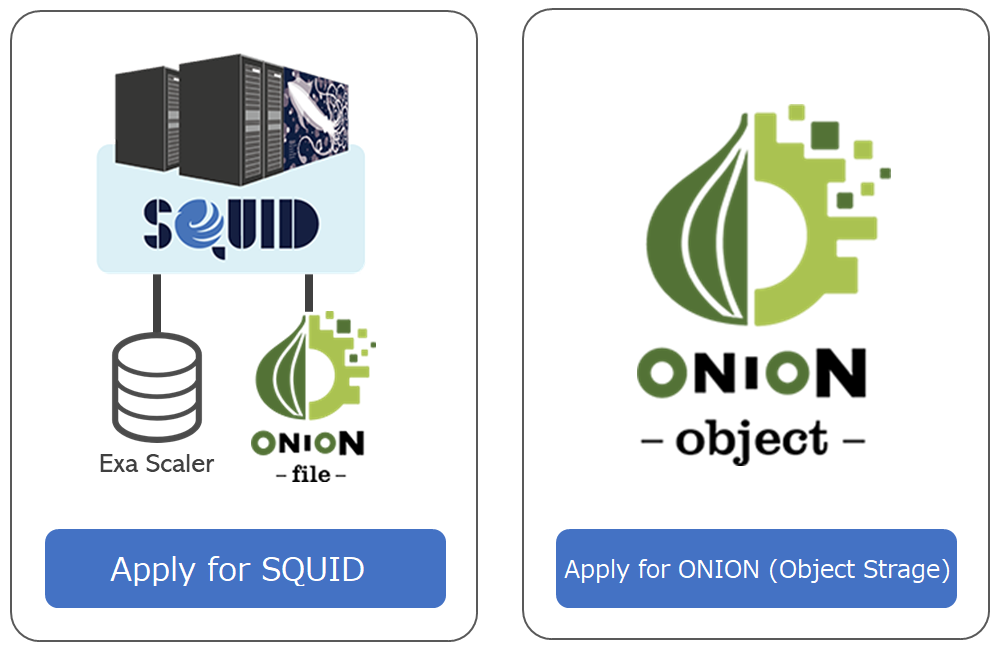
* Please refer to here for the usage fees of SQUID and ONION-object. ONION-object is referred to as "ONION (object storage)".
System configuration
EXAScaler
Main features
- Save, view, move and delete data
- Input and output data from SQUID calculation nodes
- Access data from client software that supports SFTP and S3
| effective capacity (HDD) | 20 PB |
|---|---|
| Effective capacity (NVMe) | 1.2 PB |
| Max number of inodes | about 8.8 Billion |
| Max assumed effective throughput (HDD) | Over 160 GB/s |
| Max assumed effective throughput (NVMe) | Write : Over 160 GB/s Read : Over 180 GB/s |
ONION-file
All operations and settings can be performed through a web browser. In default, only SQUID home area on EXAScaler is linked, but any external storage compatible with WebDAV, SFTP, and S3 can be linked. (For example, work area of OCTOPUS, and ONION-object described below can also be linked.)
The following operations can be performed on the linked storage from a web browser.
- Save, view, move, and delete data
- Publish URL, and share your data with those who do not use SQUID or ONION (Download / Upload).
ONION-object
Main Feature
- Save, browse, move, and delete data
- Operate objects and buckets with S3 API (some of them can be operated from a web browser)
| effective capacity | 950 TiB * We plan to expanse sequentially |
|---|---|
| data protection method | Erasure Coding (Data chunk:4 + Parity chunk:2) |
Notes
-
ONION-object is operated with the utmost care by Cybermedia Center and NEC Corporation, the vendor of SQUID, but data is not backed up. Therefore, there is a possibility of data lost due to system failure, unforeseen accidents, or natural disasters. Cybermedia Center will not be responsible for any data lost, so please back up all necessary files by yourself. In addition, please note that ONION-object is a trial service, and scheduled to be terminated at the end of April 2026 if no budgetary measures are taken by Osaka University.
How to use
How to use ONION

